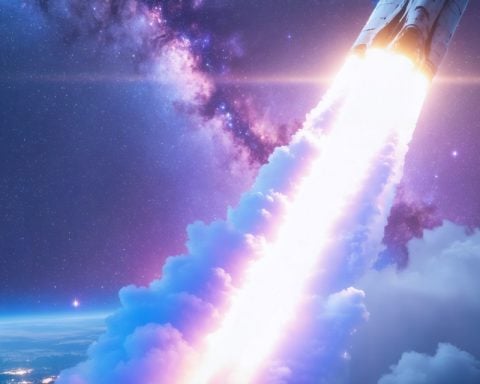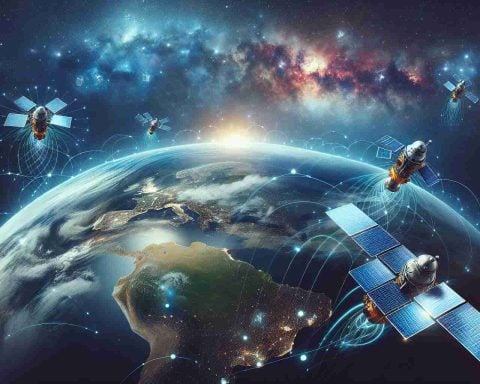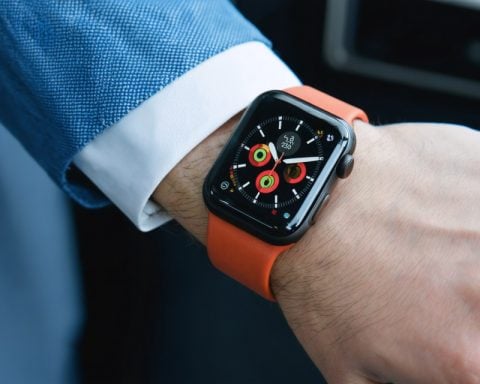- A cosmic puzzle crafted by Daniela de Paulis and the SETI Institute captivated audiences, symbolizing human curiosity in space exploration.
- The puzzle encoded with five essential amino acids, representing life’s fundamental building blocks, was delivered via the ExoMars Trace Gas Orbiter in 16 minutes.
- A global group of 5,000 citizen scientists embarked on a 10-day challenge to decode the message, showcasing the power of community-driven innovation.
- The project highlights the transformative potential of citizen science in nurturing public participation and providing educational opportunities.
- Collaborative efforts in cosmic exploration foster a global community, broadening our understanding of the universe despite the uncertainty of extraterrestrial life.
The Cosmic Mystery Begins
In the vast expanses of space, a signal captured in May 2023 captivated Earth’s scientists and dreamers alike, leading many to speculate about alien messages. However, this enigmatic signal was actually a brilliant puzzle designed by Earthbound minds, marking a groundbreaking moment in cosmic exploration.
Crafting the Celestial Enigma
The mastermind behind this interstellar challenge was Daniela de Paulis, who partnered with the SETI Institute. The puzzle, ingeniously encoded with five essential amino acids—symbolizing the building blocks of life—assumed a universal language of science, one that potential extraterrestrial beings might also comprehend. This ambitious project was delivered to Earth via the European Space Agency’s ExoMars Trace Gas Orbiter, journeying to our planet in a swift 16 minutes.
A Call to Action: Citizen Scientists Rise
Approximately 5,000 enthusiastic individuals worldwide embarked on a decoding adventure lasting 10 days. Among them were Ken Chaffin and his daughter Keli, whose year-long dedication paid off as they cracked the cosmic code on June 7, 2024, unveiling the amino acids’ visual representation. This success story underscored the immense power of teamwork and innovation in unraveling the universe’s mysteries.
Beyond the Puzzle
The initiative highlights the transformative potential of citizen science—infusing fresh perspectives, nurturing public enthusiasm, and providing educational insights. Despite challenges such as managing diverse expertise and resources, this project paves the way for future scientific revolutions. As technology advances and broader engagement grows, expect citizen science to keep pushing boundaries in various fields.
Unveiling Cosmic Secrets Together
While the existence of extraterrestrial life remains uncertain, this venture at the SETI Institute reveals how collaborative human curiosity can explore the cosmos. By involving citizen scientists, we not only explore outer space but also foster a global community with a unified purpose.
Unlocking Cosmic Mysteries: How Citizen Scientists are Revolutionizing Space Exploration
What are the new trends in citizen science, and how are they shaping scientific exploration?
Citizen science has evolved significantly, with trends showing a rapid increase in public engagement and the use of advanced technology. Initiatives like those of the SETI Institute and Daniela de Paulis have demonstrated the potential for large-scale involvement. Technologies such as machine learning and AI are being integrated into citizen science platforms, making data collection and analysis more efficient. Moreover, mobile apps and online platforms have made it easier for people worldwide to contribute to scientific studies, fostering a global community of amateur scientists who can collaborate on complex challenges. As such, citizen science is increasingly shaping the future of scientific exploration by democratizing access to data and enabling participatory research.
How did the successful decoding of the cosmic puzzle impact future projects at SETI and beyond?
The successful decoding of the cosmic puzzle by citizen scientists like Ken Chaffin and his daughter Keli has created a ripple effect across the scientific community. It demonstrated that complex problems could be solved by leveraging diverse perspectives and collective intelligence. As a result, SETI and similar organizations are likely to incorporate more projects designed to engage citizen scientists in the future. These projects may focus on decoding signals, analyzing vast datasets, or exploring other phenomena at the intersection of science and technology. This collaborative approach can accelerate discoveries and inspire innovative problem-solving methodologies.
What limitations and challenges does citizen science face, and how can they be addressed?
Citizen science faces several limitations, including the management of diverse expertise levels, the reliability of the data collected, and the allocation of resources. To address these challenges, projects must offer comprehensive training and support to participants, ensuring that their contributions meet scientific standards. Additionally, developing robust verification processes can help enhance data reliability, while leveraging technology can streamline resource allocation. Encouraging transparency and fostering a sense of community can also help overcome engagement hurdles, ensuring that citizen science projects remain sustainable and impactful.
For more information about collaborative space exploration and citizen science, visit the SETI Institute.



















